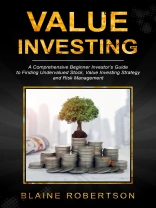Look through the internet and what you would find is different gimmicks on the best strategy for making money from the stock market. Some preach the gospel of technical analysis. That is, using past data as an indication of things to come. Others simply believe that it is impossible to beat the market. This school of thought believe that one should simply purchase any stock market index then make whatever the market makes.
These approaches and many more are fundamentally flawed for obvious reasons. For technical analysis, past price is never an indication of future market behavior. So, it is hard to predict what the market would do based on past prices. Also, though there might be some logic to buying an index fund, this is not sustainable as well. There are times when the market simply fails to make profit. Additionally, when inflation is factored in, the profit made from buying market indexes becomes less valuable as the days go by.
What then is the correct way to approach the stock market? The answer is value investing. This approach has been proved over time to be a consistent money maker in the market. Though value investors such as Warren Buffett, we have been shown that this principle can beat the market consistently if followed by a disciplined investor.
This book explores the concept of value investing from a holistic perspective. You would be introduced to the concept and shown how it has developed throw history. You would also be exposed to the fundamentals of value investing and how you can exploit that in your daily investing life. Finally, you would be prepared for a future in investing in value companies.
Innehållsförteckning
Introduction
Chapter 1: Types of Investors
Chapter 2: Introduction to Value Investing
Chapter 3: Skills Needed By Value Investors
Chapter 4: Fundamental Analysis
Determining the fair value of any stock
Determining what the financial strength of the company is
Analyzing a company’s competitive edge
An estimation of a company’s value
The perception of any stock may be influenced by sentiments
Industry trends affect the value of stocks
Fundamental analysis works best for long term investors
Chapter 5: The Graham Way
Dollar-cost averaging and investment in stocks and bonds
The margin of safety
Know yourself
Active versus passive investors
Investor versus speculator
Graham’s number
Chapter 6: Security Analysis
Balance sheets
Income statements
Cash flow statements
Chapter 7: The Value Investor and the Stock Market
Value investor immunization
A strategy for all
Low risk, high rewards
Financial smart
Indifference to market fluctuations
Lower tax rate
Save more
Compounding advantages
Fun way to invest
Chapter 8: Risk Management
Systematic risk
Unsystematic risk
Business risk
Financial risk
Liquidity risk
Market risk
Inflation risk
Features of the higher returns-higher risk model
High risk and high returns
Considers both past and present
Diversification
Avoid companies with debt
Investing in blue chips
Avoid leverage and margin
Chapter 9: Habits of Great Investors
Conclusion












